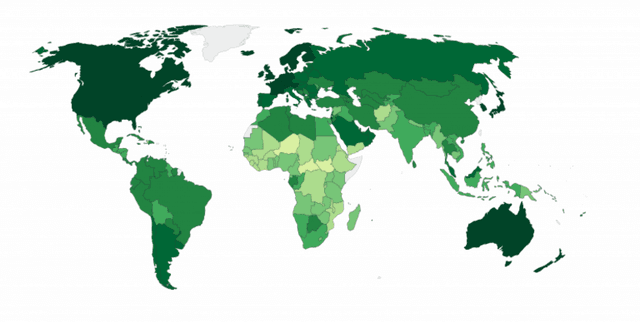Healthcare Disparities & Finance Data
Finance & Banking Analytics
Tags and Keywords
Trusted By




"No reviews yet"
Free
About
Explore the intricate relationship between wealth and health with this evolving collection of global health equity and financial protection indicators. This dataset offers insights into crucial healthcare trends and disparities, developed over two decades to provide a multifaceted view of the global healthcare landscape. It began in 2000, focusing on maternal and child health, and has since expanded to include household out-of-pocket health expenditures, noncommunicable disease indicators, and quality of care metrics.
Columns
The dataset contains 41 columns. Key identifier columns include:
- Country Name: Identifies the nation, with 197 unique entries.
- Country Code: A unique code for each country, also with 197 unique values.
- Indicator Name: Describes the health or financial protection metric, featuring 315 distinct indicators, such as "Acute respiratory infections treated (% of children under 5 with cough and rapid breathing)".
- Indicator Code: A specific code for each indicator, with 315 unique codes, for example, "HF.STA.ARIC.ZS".
- Year Columns (e.g., 1982, 1983... 2018): These columns contain the measured values for the indicators across different years. Data spans from 1982, though the collection gained significant depth from 2000 onwards. Many early year columns show a high percentage of missing values.
Distribution
The data is provided as a CSV file, named
Hefpi.csv, with a size of 9.97 MB. It contains 41 columns and approximately 62,100 records. Data evolution shows growth from 42 surveys initially to nearly 1,900 household surveys, covering 204 countries in its latest version.Usage
This dataset is an essential resource for those looking to understand and address global health disparities. It is ideal for:
- Researchers: To conduct analyses on health outcomes, financial protection, and equity trends.
- Policymakers: To inform and evaluate health policies and interventions.
- Healthcare Advocates: To support advocacy efforts for a more equitable and protected global healthcare system.
- Wealth-Health Relationship Studies: To investigate how wealth influences health indicators.
Coverage
The dataset's scope has expanded significantly over time.
- Geographic: It initially covered 42 countries in 2000, grew to 197 countries by 2019, and currently includes data from 204 countries. It incorporates data from high-income countries. The latest update provides insights into regional inequities, allowing for analysis based on urban and rural areas of residence and subnational regions.
- Time Range: The collection spans over two decades, with data points available from 1982 up to 2018 in its columns, though its main growth and depth of information start from 2000.
- Demographic/Thematic: Initial focus was on maternal and child health indicators. It later expanded to include household out-of-pocket health expenditures and noncommunicable disease indicators. The most recent version features 104 indicators, adding metrics on financial protection, effective health coverage, and quality indicators.
License
CC0: Public Domain
Who Can Use It
- Researchers: For academic studies on public health, economics, and social sciences.
- Government Officials and Policy Advisors: To formulate and assess health policies and budgets.
- Non-governmental Organisations (NGOs) and International Bodies: For program planning, monitoring, and advocacy related to global health.
- Data Scientists and Analysts: To explore trends and patterns in health and financial protection.
Dataset Name Suggestions
- Global Health Equity and Financial Protection
- Health Financial Protection Indicators
- World Health Equity Data
- Healthcare Disparities & Finance Data
Attributes
Original Data Source: Healthcare Disparities & Finance Data
Loading...
